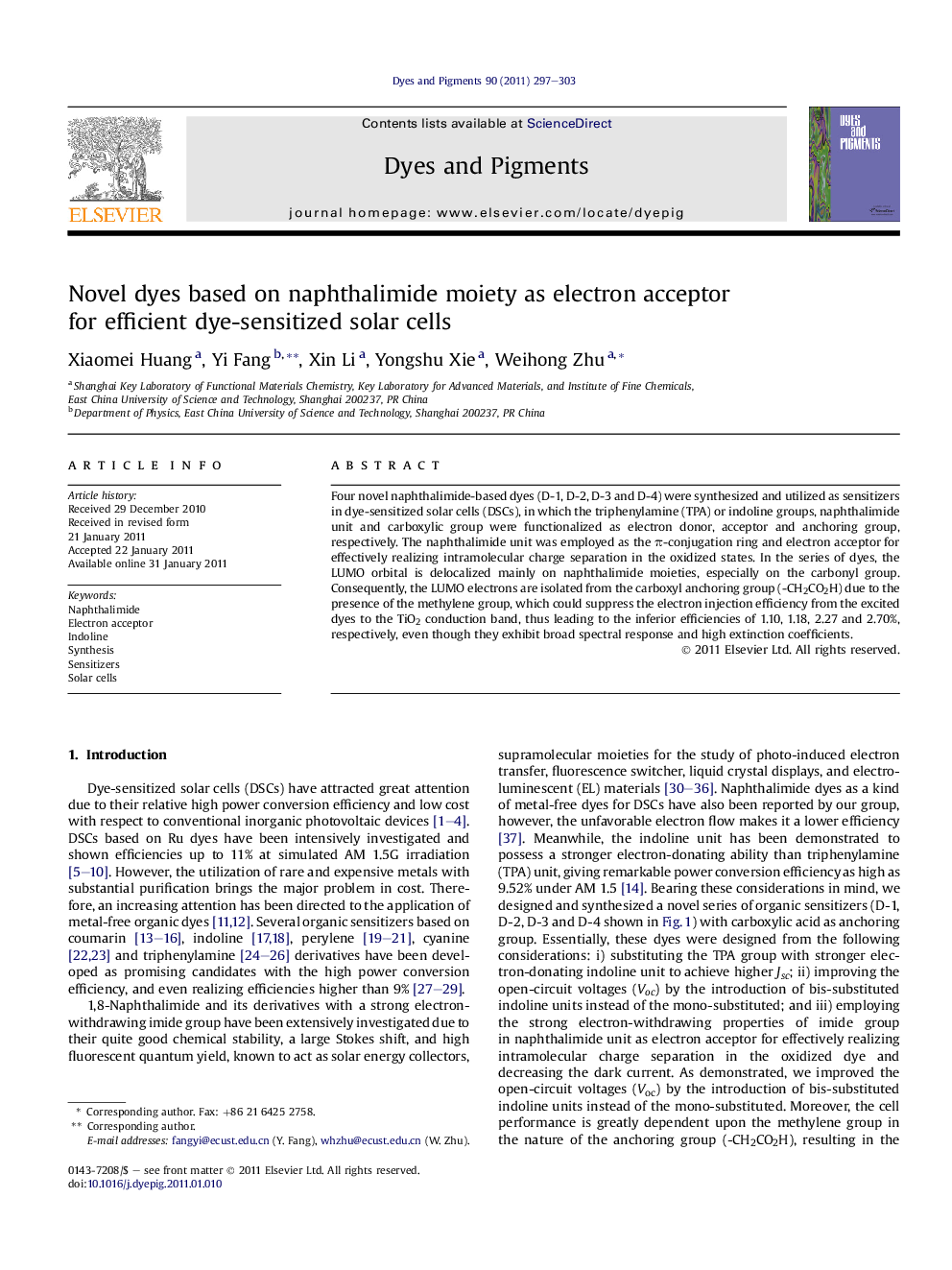| کد مقاله | کد نشریه | سال انتشار | مقاله انگلیسی | نسخه تمام متن |
|---|---|---|---|---|
| 177099 | 458964 | 2011 | 7 صفحه PDF | دانلود رایگان |

Four novel naphthalimide-based dyes (D-1, D-2, D-3 and D-4) were synthesized and utilized as sensitizers in dye-sensitized solar cells (DSCs), in which the triphenylamine (TPA) or indoline groups, naphthalimide unit and carboxylic group were functionalized as electron donor, acceptor and anchoring group, respectively. The naphthalimide unit was employed as the π-conjugation ring and electron acceptor for effectively realizing intramolecular charge separation in the oxidized states. In the series of dyes, the LUMO orbital is delocalized mainly on naphthalimide moieties, especially on the carbonyl group. Consequently, the LUMO electrons are isolated from the carboxyl anchoring group (-CH2CO2H) due to the presence of the methylene group, which could suppress the electron injection efficiency from the excited dyes to the TiO2 conduction band, thus leading to the inferior efficiencies of 1.10, 1.18, 2.27 and 2.70%, respectively, even though they exhibit broad spectral response and high extinction coefficients.
Research highlights
► The strong electron-withdrawing imide group in naphthalimide unit was utilized as electron acceptor for effectively realizing intramolecular charge separation in the oxidized dye and decreasing the dark current.
► The open-circuit voltages (Voc) was improved by the introduction of bis-substituted indoline units instead of the mono-substituted.
► The cell performance is great dependent upon the methylene group in the nature of the anchoring groups (–CH2CO2H), resulting in the electronic uncoupling of naphthalimide core to the TiO2 electrode with inferior performance.
Journal: Dyes and Pigments - Volume 90, Issue 3, September 2011, Pages 297–303